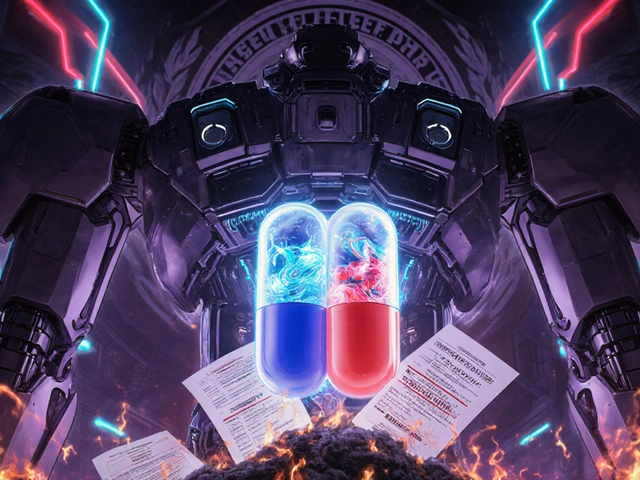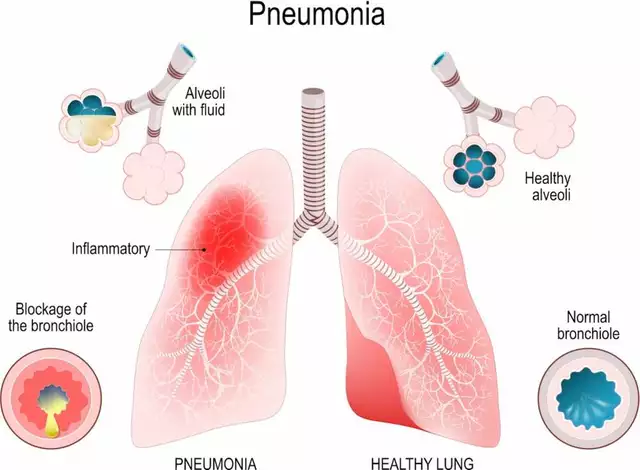When a drug combines two or more active ingredients in one pill, cream, or inhaler, it’s called a combination product. These aren’t just convenient-they’re often essential for treating complex conditions like hypertension, asthma, or psoriasis. But getting a generic version approved? That’s where things get messy. Unlike a single-pill drug, where you just compare blood levels of one chemical, combination products demand a whole new level of testing. The goal is simple: prove the generic works just like the brand. The reality? It’s one of the toughest challenges in generic drug development today.
Why Bioequivalence Gets Complicated with Combination Products
Bioequivalence means showing that a generic drug delivers the same amount of active ingredients into the bloodstream at the same rate as the original. For a single-ingredient tablet, this is straightforward. You give volunteers the brand and the generic, measure blood levels over time, and check if the numbers fall within 80-125% of each other for Cmax (peak level) and AUC (total exposure). That’s the standard. But when you combine two drugs-say, a blood pressure pill with both an ACE inhibitor and a diuretic-things change. The two chemicals might interact in the gut, alter how each is absorbed, or even affect how the body breaks them down. One drug might slow down the absorption of the other. Or worse, the formulation itself might cause one ingredient to stick to the tablet coating while the other dissolves too fast. This isn’t theoretical. Studies show that 25-30% more fixed-dose combination (FDC) bioequivalence studies fail than single-agent ones, mostly because of these hidden interactions. The FDA now requires generic makers to prove bioequivalence not just to the brand’s combination product, but also to each individual drug given separately. That means running three-way crossover studies: one group gets the brand combo, another gets the generic combo, and a third gets the two drugs taken apart. That’s not just more work-it’s more volunteers, more lab tests, more time, and more money. Sample sizes jump from 24-36 people to 40-60. And if one drug has a narrow therapeutic window-like warfarin or lithium-your acceptable range tightens from 80-125% to 90-111%. One wrong dose, and you risk toxicity or treatment failure.Topical Products: Measuring What You Can’t See
Creams, ointments, and foams used for skin conditions like eczema or psoriasis are another nightmare. You can’t just swallow a cream and measure blood levels. The drug needs to penetrate the outer layer of skin-the stratum corneum-to work. But how do you measure that? The FDA’s current method? Tape-stripping. You stick clear adhesive tape to the skin, peel it off, and repeat 15-20 times to collect layers of skin cells. Then you analyze how much drug is in each layer. Sounds simple? It’s not. There’s no standard on how thick each strip should be, how much skin to analyze, or even how to handle variations in skin type between volunteers. One lab’s results might differ from another’s by 30-40%, making it nearly impossible to compare studies. And because skin absorption is so variable, regulators often demand clinical endpoint studies-where you actually measure if the rash improves, the itch goes away, or the plaque clears. These studies need 200-300 patients per group. Each one costs $5-10 million. For a small generic company, that’s impossible. Mylan (now Viatris) spent years trying to get a generic version of calcipotriene/betamethasone foam approved. Three bioequivalence studies failed because the drug penetration measurements kept shifting between batches. The problem wasn’t the formula-it was the lack of reliable, repeatable testing.Drug-Device Combo Products: It’s Not Just the Drug
Inhalers, auto-injectors, and nebulizers are drug-device combinations. The drug matters-but so does the device. A generic inhaler might have the same active ingredient as the brand, but if the valve design, propellant pressure, or mouthpiece shape is slightly different, the particle size changes. And that changes where the drug lands in your lungs. The FDA requires aerosol particle size distribution to be within 80-120% of the brand. But measuring that? It needs expensive equipment like cascade impactors, which cost over $100,000 and require trained technicians. Even then, results can vary between labs. Worse, the user experience matters. If the inhaler requires a stronger puff, or the injector is harder to press, patients might not use it right. That’s not bioequivalence-it’s therapeutic failure. According to FDA data, 65% of complete response letters for generic inhalers and injectors cite user interface problems. That’s not a chemistry issue. It’s a design issue. And generic companies aren’t always equipped to test it. One study found that 42% of development failures at Teva were due to bioequivalence and device-related issues, not formulation problems.
Why This Costs So Much and Takes So Long
Developing a generic combination product isn’t just harder-it’s exponentially more expensive. While a standard oral generic might cost $5-10 million to develop, a complex product can hit $15-25 million. Bioequivalence studies alone make up 30-40% of that cost. And the timeline? Standard generics get approved in about 14.5 months. Combination products? 38.2 months. That’s over three years. Why the delay? Regulatory uncertainty. The FDA has issued 12 product-specific bioequivalence guidances since 2021, but there are 312 complex products on their list-and only a fraction have clear pathways. Generic companies often get conflicting feedback from different FDA review divisions. A submission might pass the chemistry team but get rejected by the device team. Industry surveys show 78% of companies cite “lack of clear bioequivalence pathways” as their biggest barrier. Small and mid-sized manufacturers are hit hardest. They can’t afford the $300,000-$500,000 LC-MS/MS machines needed to analyze multiple drugs in one sample. They can’t hire chemists with 2-3 years of specialized training. They can’t run 60-person clinical trials. As a result, 89% of generic companies surveyed in 2023 said current bioequivalence requirements for combination products were “unreasonably challenging.”How the Industry Is Fighting Back
There’s hope, though. Companies are turning to smarter tools. Physiologically-based pharmacokinetic (PBPK) modeling uses computer simulations to predict how a drug behaves in the body based on its chemical properties, not just blood samples. It’s been accepted in 17 approved ANDAs since 2020. One case showed PBPK modeling cut the need for clinical studies by 40%. Another breakthrough? In vitro-in vivo correlation (IVIVC) for topical products. Instead of relying on messy tape-stripping, researchers are using lab tests to simulate skin penetration. Early results show 85% accuracy in predicting real-world results. If this scales, it could slash development time and cost for creams and ointments. The FDA’s Complex Product Consortium, formed in 2021, is working with industry to create 50 new product-specific guidances by 2027. The first wave targets respiratory products-where 78% of submissions currently fail bioequivalence checks. They’re also teaming up with NIST to develop reference standards for inhalers and injectors, so labs can calibrate their equipment the same way.
What This Means for Patients and Healthcare
Combination products make up 38% of the global generic drug market-$112.7 billion in 2023. They’re used by millions for chronic conditions. But without affordable generics, patients face high out-of-pocket costs. A brand-name inhaler can cost $300-$500 a month. A generic? Often $50. That’s life-changing for people on fixed incomes. Right now, 45% of complex brand products have no generic competition. If bioequivalence hurdles aren’t solved, that number won’t drop before 2030. That’s $78 billion in potential savings locked away. The FDA’s new initiatives are steps in the right direction, but progress is slow. Until we have clear, standardized, and scientifically sound methods for testing these products, patients will keep paying more than they should.What’s Next for Combination Product Bioequivalence
The future lies in smarter science, not more trials. PBPK modeling, IVIVC, and reference standards will become the norm, not the exception. Regulators are starting to accept them-but only if the data is rock solid. Companies that invest in these technologies now will lead the next wave of generic approvals. For now, the message is clear: combination products aren’t just harder to make. They’re harder to prove are the same. And until testing methods catch up to the science, generic developers will keep hitting walls. The system isn’t broken-it’s just outdated. Fixing it won’t just save money. It’ll save lives.What is a combination product in pharma?
A combination product in pharma is a medical product that combines two or more different types of components-like two active drugs in one pill (fixed-dose combination), a drug with a delivery device (like an inhaler or injector), or a drug with a topical applicator. These are designed to improve treatment effectiveness, simplify dosing, or enhance patient adherence. Examples include asthma inhalers with albuterol and fluticasone, or skin creams combining a steroid and an antifungal.
Why is bioequivalence harder for combination products than single-drug products?
Bioequivalence is harder because combination products involve multiple active ingredients that can interact with each other during absorption, distribution, or metabolism. One drug might slow down or speed up how the other is absorbed. The formulation itself-like a tablet coating or cream base-can change how each ingredient behaves. Regulatory agencies now require proof of bioequivalence to both the combined product and each individual component, which means more complex study designs, larger sample sizes, and more analytical work.
How do regulators test bioequivalence for topical combination products?
For topical products like creams and foams, regulators use tape-stripping to collect layers of skin and measure how much drug penetrates. But there’s no standard on how many layers to take, how thick they should be, or how to analyze them. This leads to inconsistent results between labs. Some companies are now using in vitro-in vivo correlation (IVIVC) models, which predict skin absorption using lab tests instead of human trials. Early results show these models can predict real-world outcomes with 85% accuracy, potentially replacing messy and unreliable tape-stripping.
Why do drug-device combination products fail bioequivalence testing?
Drug-device products like inhalers or injectors often fail not because of the drug, but because of the device. A different valve, nozzle, or button pressure can change how the drug is delivered-altering particle size, dose accuracy, or how deep it reaches in the lungs. Even if the chemical is identical, if the patient can’t use it the same way, the drug won’t work the same. The FDA finds that 65% of complete response letters for these products cite user interface problems, not chemistry issues.
How long does it take to get a generic combination product approved?
Standard generic drugs take about 14.5 months to get FDA approval. Combination products take an average of 38.2 months-over three years. That’s because they require more complex studies, unclear regulatory pathways, and often multiple rounds of feedback from different FDA teams. Development costs can reach $15-25 million, and many studies fail on the first try due to bioequivalence or device issues.
Can computer modeling replace clinical trials for combination products?
Yes, in some cases. Physiologically-based pharmacokinetic (PBPK) modeling uses computer simulations to predict how a drug behaves in the body based on its chemical properties and formulation. The FDA has accepted PBPK models in 17 approved generic applications since 2020. These models can reduce the need for clinical trials by 30-50%, especially for complex oral and topical products. They’re not a full replacement yet, but they’re becoming a critical tool to cut development time and cost.







Post A Comment